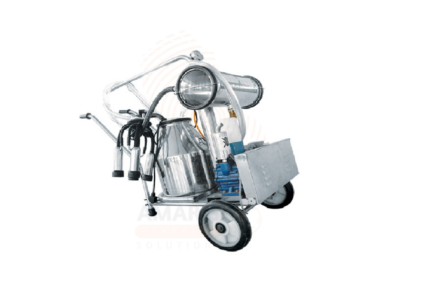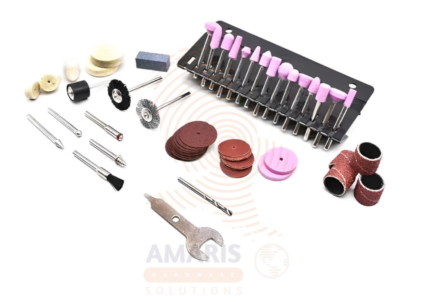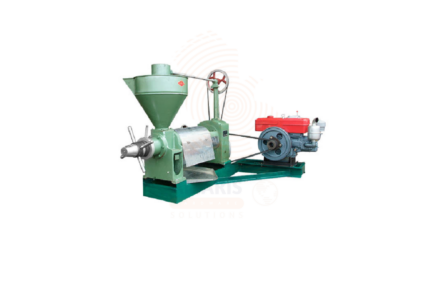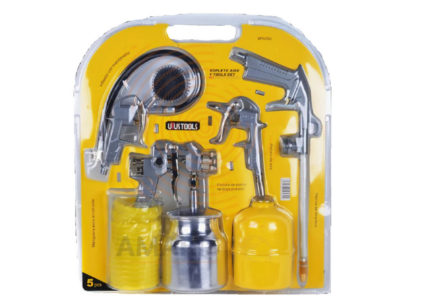
Magnetic Socket Connecting Rod
$13.92 Original price was: $13.92.$13.22Current price is: $13.22.
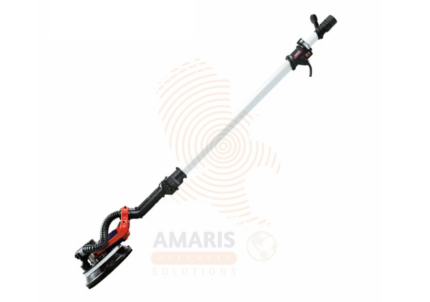
Dry Wall Sander
$138.46 Original price was: $138.46.$131.54Current price is: $131.54.
Direct Drive Air Compressor
$153.85 Original price was: $153.85.$146.16Current price is: $146.16.
WhatsApp Order
A direct drive air compressor is a type of air compressor where the motor is directly connected to the compressor pump, typically without the use of belts or gears. In this configuration, the motor and the pump share a common shaft, resulting in a more compact and efficient design. Direct drive compressors are known for their simplicity, reduced maintenance requirements, and higher power transmission efficiency compared to belt-driven or gear-driven counterparts. They are commonly used in various applications, including powering pneumatic tools, inflating tires, and providing compressed air for industrial processes.
Categories: Industrial Hoses, INDUSTRIAL SUPPLIES, Lifting Equipment: Hoists, Cranes, and Jacks, MATERIAL HANDLING
Tags: air supply equipment, air system component, direct drive air compressor, heavy-duty compressor, high-pressure compressor, industrial air compressor, pneumatic tool power, workshop compressor
Description
Table of Contents
ToggleDirect Drive Air Compressor
Uses
-
Powering Pneumatic Tools:
-
Direct drive air compressors are frequently used to provide a continuous and reliable source of compressed air for pneumatic tools such as impact wrenches, nail guns, and air drills in construction, automotive repair, and manufacturing industries.
-
-
Inflating Tires:
-
Direct drive compressors are commonly employed for inflating tires in automotive service stations, garages, and for personal use in homes or workshops.
-
-
Spray Painting:
-
Direct drive air compressors are utilized in the painting industry to power spray guns for applications such as automotive painting, furniture finishing, and other coating processes.
-
-
Airbrushing:
-
Artists and hobbyists often use direct drive compressors for airbrushing, providing a steady and adjustable airflow for precision in painting and art projects.
-
-
Cleaning and Dusting:
-
Direct drive air compressors are used to power air blow guns for cleaning purposes, such as removing dust and debris from machinery, workspaces, or electronic equipment.
-
-
Industrial Processes:
-
In various manufacturing processes, direct drive air compressors are employed to supply compressed air for tasks like operating pneumatic cylinders, controlling valves, and providing air for other automated systems.
-
-
HVAC Systems:
-
Direct drive compressors play a role in heating, ventilation, and air conditioning (HVAC) systems, providing compressed air for control systems, actuators, and other components.
-
-
Pressure Testing:
-
They are used for pressure testing applications where a controlled and consistent air pressure is required to test the integrity of pipes, tanks, or other pressure vessels.
-
-
Medical and Laboratory Equipment:
-
In certain medical and laboratory applications, direct drive air compressors may be used for tasks such as providing compressed air for medical instruments, laboratory testing equipment, or research applications.
-
-
DIY and Home Improvement:
-
Direct drive air compressors are popular among DIY enthusiasts and homeowners for tasks such as operating air tools, inflating sports equipment, and general household maintenance.
-
SAFETY HANDLING PRECAUTIONS
Safety Precautions
-
Read and Follow the Manufacturer's Instructions:
-
Always read and understand the user manual and safety guidelines provided by the manufacturer. Follow the recommended operating procedures and maintenance instructions.
-
-
Proper Installation:
-
Ensure the compressor is properly installed on a stable and level surface. Follow the manufacturer's guidelines for installation, including proper ventilation to prevent overheating.
-
-
Protective Equipment:
-
Wear appropriate personal protective equipment (PPE) such as safety glasses, hearing protection, and, if necessary, gloves when operating the air compressor or any associated tools.
-
-
Pressure Regulation:
-
Set and regulate the air pressure to the recommended levels for the tools or applications you are using. Avoid exceeding the maximum pressure rating of the equipment.
-
-
Air Hose Inspection:
-
Regularly inspect the air hoses for any signs of damage, wear, or leaks. Replace damaged hoses immediately to prevent accidents or injuries.
-
-
Secure Connections:
-
Ensure that all connections, including hoses, fittings, and couplings, are securely fastened. Loose connections can result in air leaks and pose safety hazards.
-
-
Relief Valve Inspection:
-
Regularly check the relief valve to ensure it is functioning properly. The relief valve releases excess pressure and prevents over-pressurization of the system.
-
-
Bleed Air Before Disconnecting:
-
Before disconnecting hoses or performing maintenance, bleed the air pressure from the system. This reduces the risk of sudden releases of pressurized air.
-
-
Avoid Overheating:
-
Allow the compressor to cool down before storing it or performing maintenance. Overheating can lead to equipment malfunctions and safety hazards.
-
-
Electricity Safety:
-
If the direct drive air compressor is electrically powered, follow electrical safety guidelines. Use grounded outlets, inspect power cords for damage, and avoid using extension cords unless approved by the manufacturer.
-
-
Stable Operation Surface:
-
Place the compressor on a stable surface to prevent tipping. Secure the unit to prevent accidental movement during operation.
-
-
Ventilation:
-
Ensure proper ventilation in the workspace to dissipate heat generated by the compressor. Adequate ventilation also helps prevent the buildup of fumes if the compressor is used in enclosed spaces.
-
-
Training and Supervision:
-
Provide proper training for individuals operating the compressor. Supervise inexperienced users until they are familiar with the equipment and safety procedures.
-
-
Emergency Procedures:
-
Familiarize yourself with emergency shutdown procedures and the location of emergency shut-off switches. Be prepared to respond quickly in case of any issues.
-
Related products
Die Set
An Die Set typically refers to an 8-piece die set used in various manufacturing and machining processes. In manufacturing and metalworking, dies are specialized tools used to shape, cut, or form materials such as metal, plastic, or other substances. A die set, in this context, is a collection of individual dies designed to work together for specific tasks.
German Type Grease Gun
A "German type grease gun" typically refers to a type of grease gun that is of German origin or follows a design influenced by German engineering. A grease gun is a handheld tool used in automotive and industrial settings to apply lubricating grease to machinery or equipment. The term "German type" may indicate that the grease gun follows design principles, specifications, or standards commonly associated with German engineering. German engineering is often associated with precision, durability, and high-quality manufacturing. Therefore, a German type grease gun may be expected to exhibit these characteristics. It's worth noting that specific details about a "German type grease gun" may vary, and the term may be used loosely to refer to any grease gun with characteristics reminiscent of German design principles.
Hand Pump
A hand pump is a manually operated device designed to draw or move fluids, typically liquids, from one place to another by using human force. It usually consists of a handle or lever that is manually operated to create suction or pressure, enabling the pumping action to transfer the fluid through a system of valves and pipes. Hand pumps are commonly used for various applications, such as extracting water from wells, transferring liquids between containers, or dispensing fluids in a controlled manner.
Milking Machine
A Milking Machine is a mechanized system designed to extract milk from dairy animals such as cows, goats, and sheep in an efficient, hygienic, and consistent manner. It typically consists of a vacuum pump, pulsator, teat cups, milk container, and tubing system. The machine works by creating a vacuum that gently draws milk from the animal's udder through the teat cups and collects it into a sealed container, minimizing contamination. Milking machines improve milking speed, reduce manual labor, and enhance udder health by maintaining a uniform milking routine. They are essential in dairy farming operations of all scales—from smallholder farms to large commercial dairies—where consistency and hygiene are critical for milk production.
Mini Die Polisher Kit
A MINI DIE POLISHER KIT," it could potentially be a set of 80 pieces of miniature tools and accessories designed for polishing or finishing small objects, such as jewelry, metalwork, or other intricate items.
In such a kit, you might expect to find a variety of mini die polishers, polishing compounds, abrasive tools, and other accessories that cater to detailed and precise polishing tasks. The specific contents could include items like mini polishing wheels, buffs, abrasive discs, polishing compounds, and various attachments suitable for use in a smaller-scale polishing environment.
Oil Expeller
An Oil Expeller is a mechanical device used to extract oil from oil-bearing seeds and nuts through a process of high-pressure mechanical pressing. It typically consists of a screw shaft, pressing chamber, and power system (manual, electric, or engine-driven), and is widely used in small-scale farms, local oil mills, and commercial processing units. Capable of handling materials like sunflower seeds, groundnuts, soybeans, mustard, coconut, and sesame, oil expellers are available in both cold press and hot press variants. This machine enables efficient, chemical-free oil extraction, producing unrefined oil and residual seed cake for further use.
Spray Gun & Air Tool Accessory Kit Set
A Spray Gun & Air Tool Accessory Kit Set typically refers to a package or bundle that includes five essential components or accessories designed to complement and enhance the functionality of spray guns and air tools. These kits are commonly used in various applications, such as automotive painting, woodworking, and other projects where spray painting or air-powered tools are employed. The specific contents of the kit may vary, but it often includes items such as different nozzle attachments, connectors, air hoses, and other accessories necessary for optimal performance and versatility with spray guns and air tools. The aim is to provide users with a comprehensive set of tools and accessories to meet their diverse needs in a convenient and cost-effective manner.
Stone Separator
A stone separator is an agricultural or industrial machine designed to remove stones and other unwanted materials from grains, seeds, soil, or construction aggregates. Using vibration, airflow, or gravity-based separation methods, it ensures cleaner, higher-quality end products. Stone separators are commonly used in farming, food processing, milling, and construction to improve operational efficiency and prevent equipment damage from hard debris.


 Acrylic Sealants
Acrylic Sealants Construction Adhesives
Construction Adhesives Double-Sided Tape
Double-Sided Tape Duct Tape
Duct Tape Electrical Tape
Electrical Tape Epoxy & Resins
Epoxy & Resins Masking Tape
Masking Tape
 Automotive Wrenches & Socket Sets
Automotive Wrenches & Socket Sets Battery Chargers & Jump Starters
Battery Chargers & Jump Starters Car Jacks & Stands
Car Jacks & Stands Car Wash & Detailing Products
Car Wash & Detailing Products Diagnostic Tools
Diagnostic Tools Tire Inflators
Tire Inflators Vehicle Lighting
Vehicle Lighting Oil & Lubricants
Oil & Lubricants
 Adhesives & Sealants
Adhesives & Sealants Bricks & Blocks
Bricks & Blocks Cement & Concrete
Cement & Concrete Drywall & Plaster
Drywall & Plaster Flooring (Tiles, Wood, Laminate)
Flooring (Tiles, Wood, Laminate) Lumber & Plywood
Lumber & Plywood Paints, Primers & Coatings
Paints, Primers & Coatings Insulation Materials
Insulation Materials Roofing Materials
Roofing Materials
 Circuit Breakers
Circuit Breakers Electrical Cables & Wires
Electrical Cables & Wires Switches & Sockets
Switches & Sockets Fuses & Relays
Fuses & Relays Connectors & Terminals
Connectors & Terminals Electrical Boxes & Panels
Electrical Boxes & Panels Conduit & Fittings
Conduit & Fittings Lighting Fixtures & Bulbs
Lighting Fixtures & Bulbs Extension Cords & Power Strips
Extension Cords & Power Strips
 Anchors
Anchors Bolts
Bolts Clips & Clamps
Clips & Clamps Screws
Screws Nuts
Nuts Washers
Washers Rivets
Rivets Nails
Nails Threaded Rods
Threaded Rods
 Hammers
Hammers Measuring Tools (Tapes, Levels, Calipers)
Measuring Tools (Tapes, Levels, Calipers) Screwdrivers
Screwdrivers Pliers & Cutters
Pliers & Cutters Saws & Blades
Saws & Blades Chisels & Punches
Chisels & Punches Allen Keys & Hex Keys
Allen Keys & Hex Keys Ratchets & Socket Sets
Ratchets & Socket Sets Wrenches & Spanners
Wrenches & Spanners
 Power Tool Accessories (Blades, Bits, Discs)
Power Tool Accessories (Blades, Bits, Discs) Rotary Tools
Rotary Tools Saws (Circular, Jigsaw, Reciprocating)
Saws (Circular, Jigsaw, Reciprocating) Drills & Drivers
Drills & Drivers Grinders & Sanders
Grinders & Sanders Heat Guns
Heat Guns Nail Guns
Nail Guns Impact Wrenches
Impact Wrenches Batteries & Chargers
Batteries & Chargers
 Pipes & Fittings (PVC, Copper, PEX)
Pipes & Fittings (PVC, Copper, PEX) Plumbing Tools
Plumbing Tools Pumps & Motors
Pumps & Motors Sealants & Adhesives for Plumbing
Sealants & Adhesives for Plumbing Valves & Taps
Valves & Taps Water Heaters
Water Heaters Drainage Systems
Drainage Systems Faucets & Fixtures
Faucets & Fixtures Hoses & Tubing
Hoses & Tubing
 Hinges & Latches
Hinges & Latches Hooks & Brackets
Hooks & Brackets Window Hardware
Window Hardware Chains & Cables
Chains & Cables Casters & Wheels
Casters & Wheels Shelving & Storage Systems
Shelving & Storage Systems Door Handles & Locks
Door Handles & Locks Drawer Slides & Cabinet Hardware
Drawer Slides & Cabinet Hardware
 Personal Protective Equipment (PPE)
Personal Protective Equipment (PPE) Respirators & Masks
Respirators & Masks Safety Glasses
Safety Glasses Safes
Safes Security Cameras
Security Cameras Gloves
Gloves Helmets
Helmets Ear Protection
Ear Protection Fire Safety Equipment
Fire Safety Equipment Locks & Padlocks
Locks & Padlocks Motion Sensors & Alarms
Motion Sensors & Alarms
 Garden Fencing
Garden Fencing Garden Furniture Hardware
Garden Furniture Hardware Lawn Mowers
Lawn Mowers Trimmers & Edgers
Trimmers & Edgers Shovels & Spades
Shovels & Spades Rakes & Hoes
Rakes & Hoes Pruning Shears & Loppers
Pruning Shears & Loppers Watering Systems (Hoses, Sprinklers, Nozzles)
Watering Systems (Hoses, Sprinklers, Nozzles)
 Interior Paints
Interior Paints Paint Brushes & Rollers
Paint Brushes & Rollers Paint Strippers & Thinners
Paint Strippers & Thinners Paint Trays & Accessories
Paint Trays & Accessories Exterior Paints
Exterior Paints Spray Paints
Spray Paints Primers & Undercoats
Primers & Undercoats Varnishes & Stains
Varnishes & Stains
 Gaskets & Seals
Gaskets & Seals Hydraulic Fittings
Hydraulic Fittings Industrial Fasteners
Industrial Fasteners Industrial Hoses
Industrial Hoses Lubricants & Greases
Lubricants & Greases Metal Sheets & Bars
Metal Sheets & Bars Bearings & Bushings
Bearings & Bushings Belts & Pulleys
Belts & Pulleys
 HVAC Filters
HVAC Filters Insulation for HVAC
Insulation for HVAC Air Conditioners
Air Conditioners Refrigerants
Refrigerants Ventilation Ducts & Fittings
Ventilation Ducts & Fittings Thermostats & Controllers
Thermostats & Controllers Fans & Blowers
Fans & Blowers
 Pegboards & Hooks
Pegboards & Hooks Shelving Units
Shelving Units Storage Bins & Containers
Storage Bins & Containers Toolboxes & Tool Chests
Toolboxes & Tool Chests Workbenches
Workbenches Drawer Organizers
Drawer Organizers Labeling Supplies
Labeling Supplies
 Welding Accessories (Clamps, Brushes)
Welding Accessories (Clamps, Brushes) Welding Electrodes & Rods
Welding Electrodes & Rods Welding Helmets & Gloves
Welding Helmets & Gloves Welding Machines
Welding Machines Soldering Irons & Stations
Soldering Irons & Stations Flux & Solder Wire
Flux & Solder Wire
 Generator Accessories
Generator Accessories Inverters
Inverters Portable Generators
Portable Generators Power Inverters
Power Inverters Transfer Switches
Transfer Switches Diesel & Gasoline Generators
Diesel & Gasoline Generators
 Transport Equipment: Carts, Dollies, and Hand Trucks
Transport Equipment: Carts, Dollies, and Hand Trucks Storage Solutions: Pallets, Racks, and Containers
Storage Solutions: Pallets, Racks, and Containers Lifting Equipment: Hoists, Cranes, and Jacks
Lifting Equipment: Hoists, Cranes, and Jacks Conveyors and Accessories: Belts and Rollers
Conveyors and Accessories: Belts and Rollers



